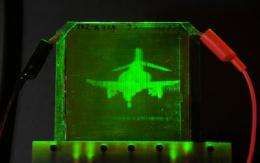In today’s world, technology is advancing at a rapid pace, and this includes the way we live in our cities. Smart cities are the future of urban living, and they are changing the way we interact with our environments in unprecedented ways. From improved infrastructure to enhanced quality of life, smart cities are revolutionizing the urban landscape.
What is a Smart City?
A smart city is a city that utilizes technology to improve the quality of life for its residents. This can include anything from smart transportation systems to energy-efficient buildings and improved public services. The goal of a smart city is to use data and technology to create a more sustainable, livable, and efficient urban environment.
The Benefits of Smart Cities
There are numerous benefits to living in a smart city. For example, smart transportation systems can reduce traffic congestion and improve air quality. Smart energy grids can help cities reduce their carbon footprint and lower energy costs. Additionally, smart cities can improve public safety through the use of surveillance cameras and sensors that can detect and respond to emergencies in real-time.
Infrastructure and Connectivity
One of the key components of a smart city is its infrastructure and connectivity. Smart cities use a network of sensors and devices to collect data on everything from traffic patterns to air quality. This data is then analyzed to help city officials make informed decisions about how to improve their cities’ infrastructure and services.
For example, sensors in parking meters can help drivers find parking spots more easily, while sensors in garbage cans can alert city officials when they need to be emptied. Additionally, smart cities use technology to connect residents with public services, such as public transportation, emergency services, and utilities.
Quality of Life
Smart cities are also focused on improving the quality of life for their residents. For example, smart streetlights can adjust their brightness based on the time of day, helping to reduce light pollution and save energy. Smart parks can use sensors to monitor air quality and temperature, creating a more pleasant environment for residents to enjoy.
Additionally, smart cities are using technology to improve public services, such as healthcare and education. For example, telemedicine services can connect residents with doctors virtually, while online education platforms can provide access to high-quality education for all residents.
The Future of Smart Cities
As technology continues to advance, so too will the capabilities of smart cities. In the future, we can expect to see even greater integration of technology into our urban environments, from autonomous vehicles to drone delivery services. Smart cities will continue to evolve and adapt to the changing needs of their residents, creating a more sustainable, efficient, and livable urban landscape.
Overall, smart cities are the future of urban living, and they are changing the way we interact with our environments in unprecedented ways. From improved infrastructure to enhanced quality of life, smart cities are revolutionizing the urban landscape and creating a more sustainable, efficient, and livable urban environment for all residents.


